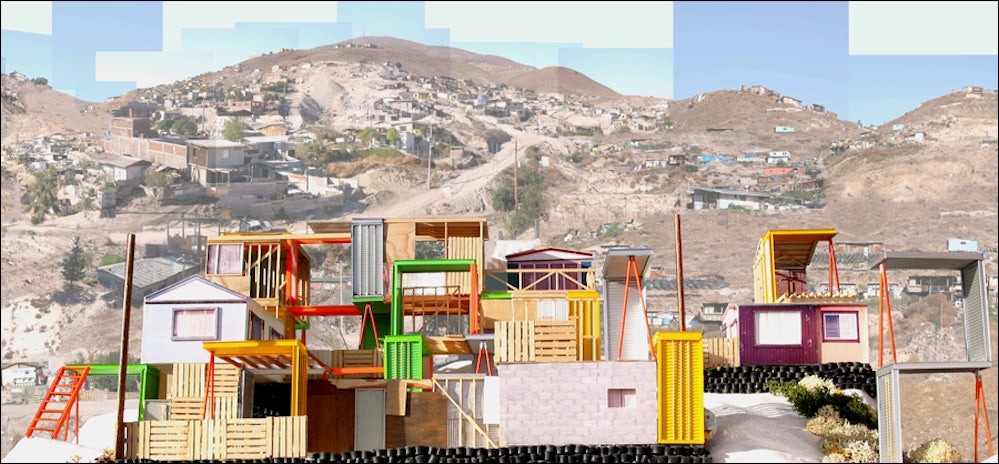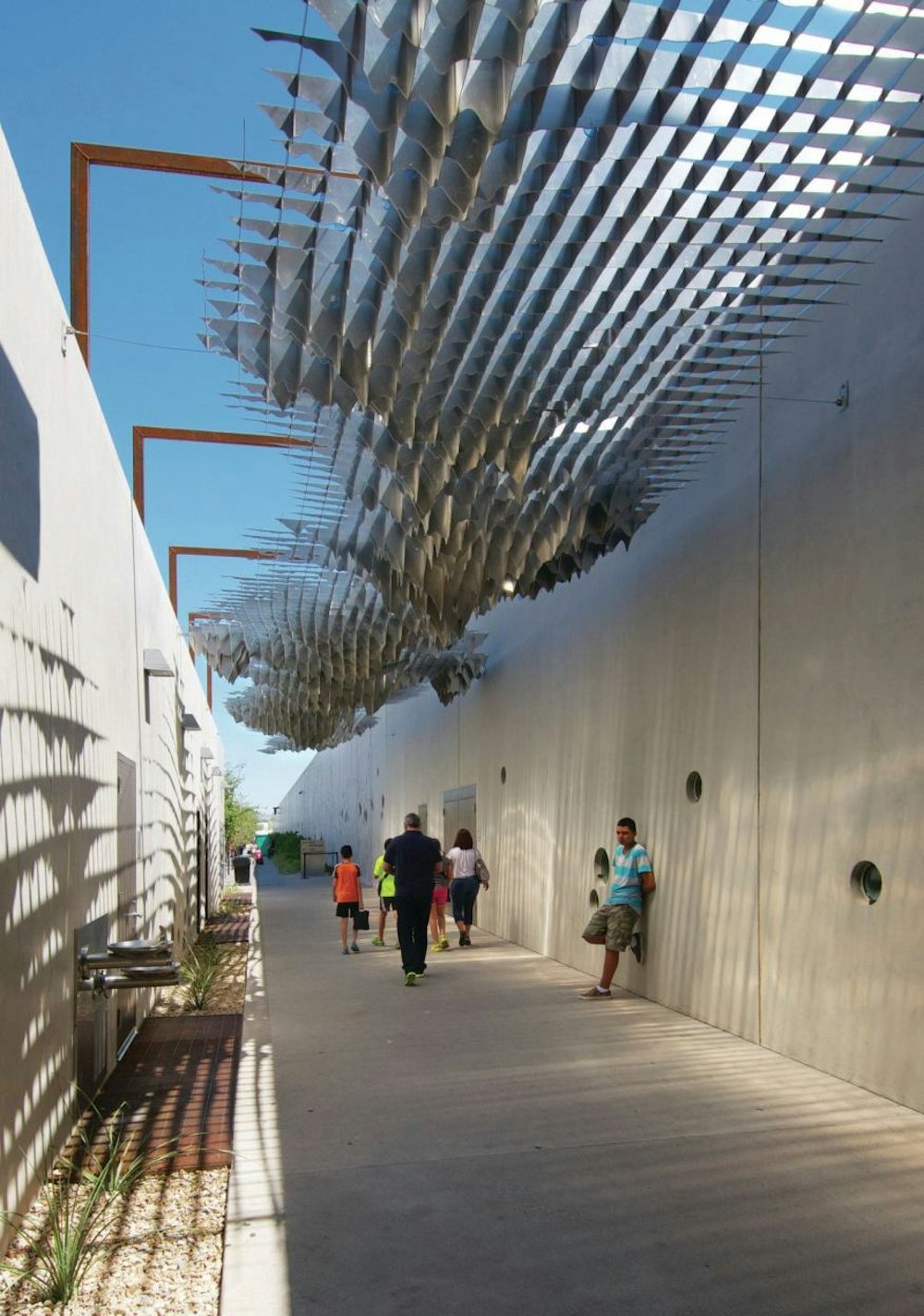As the director of the Southern Border Communities Coalition, Ramirez works with 60 community organizations to strengthen oversight of U.S. Customs and Border Protection, the federal agency tasked with securing the nation’s borders. And so it was with dismay that he responded to news that a website is hosting a Donald Trump-inspired competition for border wall designs. “The sad reality is that the border region is still viewed as a barren land, with no history, no culture, not inhabited. And that has made this rhetoric of militarization and of iron-fisted policies acceptable as the mainstream narrative of the border region,” he said. “Unfortunately, this sort of contest is right up that alley.”
The competition in question—“Building the Border Wall?”—has stirred up considerable debate since launching in early March. When architectural news website ArchDaily.com posted a call for entries, some wondered whether the competition was a joke. Architect Fabrizio Gallanti called for a boycott of ArchDaily, and demanded the cancelation of the competition itself. Many others, including the architecture competition site Bustler, questioned the ethics of sharing and participating in a competition that seemed to promote xenophobia.
The Third Mind Foundation—a group of “architects, designers, and artists who wish to remain anonymous,” according to its website—is sponsoring the competition. It stated in the original challenge: “Design a barrier of architectural merit that is realistically priced to build and made of materials that will not only be effective in keeping out waves of illegal immigration, but that will also be relatively inexpensive to maintain.” On the jury page, a panel composed of deceased luminaries such as Frida Kahlo, Rosa Parks, John F. Kennedy, and Buckminster Fuller presides, further confusing matters.
Mayer said, “So much of what we experience is a lot of hysteria that happens inland in the United States, and yet people don’t realize what it’s like down here near the border.” He explained that, contrary to popular opinion, “It’s not filled with crime and it’s not filled with all this destruction and, for the most part, people really value both sides.” After viewing the competition site, he asked, “Instead of building walls and having a competition to build walls, why don’t we put into effect a competition that can build relationships?”
Juanita Molina, executive director of Border Action Network and Humane Borders, a group that tracks border deaths, agreed that architects could put their imaginations to better use. The border wall has not stopped migration, Molina said, only pushed people into the most dangerous, inhospitable areas of the Arizona desert. “To just demonize the people crossing is a very short-sighted view which actually contributes to their invisibility and to the violence,” she said. But then what should architects do, if not design a wall? Molina suggested that since most migrants travel at night and often get lost, architects could help create beacons to safety.
“If you speak to most border residents, the whole idea of this competition kind of misses the point,” said Vicki Gaubeca, the director of the ACLU-New Mexico Regional Center for Border Rights, who lives in Las Cruces, New Mexico. Many people have a misconception that the border is just a line, she said. But within the 100-air-mile enforcement zone given to Customs and Border Protection, Latino and Native American residents are frequently subjected to racial profiling at the many checkpoints far from the actual boundary line. Gaubeca called it a “virtual cage.”
She strongly opposed the notion that the border wall could be made better by design. “Why improve on a bad idea?” she asked. “With all the accoutrements that you want to put on that wall, it’s still a wall, and it’s not a bridge.” Instead, she suggested that architects focused their skills on the colonias, unincorporated border towns that lack infrastructure like roads, potable water, sewers, and dams to protect them from flooding. “It would be great if architects actually got into doing that instead of developing something that could be so damaging to our communities and our environment.”
For Teresa Leal, the director of a small art museum in Nogales, Arizona, the border wall is more than an inconvenience. It divides her tribal lands, separating her people from their sacred sites and burial grounds. As a member of the Opata tribe, she is part of a network of other tribal nations divided by the border, including the Tohono O’odham and Apache nations. “As Indian people, I can tell you this corridor for thousands of years has been our corridor,” she said. In her daily trips to and from sites in Mexico, she must flash her permanent residency card at the border checkpoints, a daily reminder that she is a foreigner in her ancestral land.
As a member of the Border Patrol Victims Network, Leal also supports a dozen families who have lost loved ones to border patrol shootings, several of whom were killed on the Mexican side of the wall. For her, the architectural competition to design a wall is “offensive, ridiculous. … It’s just as if they were trying to design a guillotine, like in the French Revolution.” She urged architects to tell Trump and other politicians who support building the border wall, “‘We can’t be your co-conspirators. We can’t help you to look good. No matter what you build, it’s going to have the same purpose.’”
In the border city of El Paso, Texas, the sense of division feels especially sharp for Guillermo Glenn, who has lived in the border region since 1973. He used to cross the border into Juarez all the time, and remembers the city before NAFTA took effect. People “went to Juarez to celebrate, to cultural events, to the cathedral and the market.” But now, with the long lines at the border crossing and harassment by border patrol, along with the increase in poverty and cartel violence in Juarez, no one wants to go. “Some of the young people don’t even know what Juarez looks like anymore,” he said. Instead, he said, the crossing in El Paso has increasingly come to feel like a segregated passage that privileges the transnational corporations that run the low-wage factories known as maquiladoras in Juarez, while pedestrians and vehicles must wait in long lines under the hot sun.



